Exotic currencies are not mainstream in the forex market. Because they come from smaller markets, they are usually riskier to trade and more susceptible to very high volatility. But where there’s a bit more risk, there are often some of the best trading opportunities, as is the case with USD/CLP.
To trade USD/CLP:
- Study the pair and the factors that influence its movement
- Choose a broker and get an account
- Select a trading and charting platform
- Analyze USD/CLP and develop a robust trading plan
- Devise a trading strategy complete with risk management rules
- Enter a trade, monitor your position, and complete the trade
Table of Contents
It goes without saying that you need thorough knowledge of the pair and trading experience to earn more successfully with USD/CLP. However, movements of the pair are common and they tend to be strong, so opportunities to enter into trades occur quite often. With a robust trading plan, trading USD/CLP can be rewarding.
Currency Pair Chart and Profile
USD/CLP is a pair comprising the U.S. dollar and the Chilean peso. It is a representation of how many Chilean pesos are needed to purchase one dollar.
The economies behind USD/CLP
The economy of the U.S. is the biggest in the world according to GDP rankings. Natural resources and well-developed infrastructure are two of the main drivers behind the economy. The U.S. is among the major players when it comes to global imports and exports and its largest trading partners include Canada, China, Japan, Mexico, Germany, and the U.K.
Chile ranks 42nd in world GDP rankings and its economy is considered one of the best in South America. Chile is the world’s largest copper producer, but other commodities that support the economy and drive GDP growth include lithium, fruit, wood, wine, and seafood. Since commodity exports make up a significant part of GDP, the Chilean peso is known as a commodity currency. Chile’s top trading partners are China, the U.S., Japan, and Brazil.
The Federal Reserve System governs monetary policy in the U.S. and in Chile, the Central Bank of Chile determines the monetary policy.
What moves the value of USD/CLP?
On the U.S. dollar side:
- The dollar is normally moved by fundamental factors such as supply, demand, and investor speculation. For example, if the dollar is expected to strengthen in the future, traders are likely to buy it, and vice versa.
- U.S. Economic data and news have a significant impact on the value of USD/CLP. Important data to look out for includes inflation, retail sales, industrial production Figures, GDP, CPI, and NFP. Central bank announcements also influence the U.S. dollar and so just the expectation of future interest rate changes can move USD/CLP.
- U.S. political fluctuations influence the value of the U.S. dollar, and in turn, the value of USD/CLP. For instance, a political event that is perceived as negative will likely cause the value of the U.S. dollar to decrease.
On the Chilean peso side:
- Since the Chilean peso is a commodity currency, commodity prices, notably those of copper, have a substantial impact on the movement of USD/CLP.
- The political landscape in Chile affects the value of the Chilean peso. For example, political unrest will likely hurt the value of the peso.
- The Chilean peso is affected by movements in the currencies of neighboring countries. This is especially true for Brazil, which is one of Chile’s biggest trade partners.
- Announcements by the Central Bank of Chile can move the price of USD/CLP. When trading the pair it’s vital to know about any announcements and interventions by the central bank.
Is USD/CLP an exotic pair?
USD/CLP is an exotic pair. An exotic currency pair usually consists of a major currency and the currency of a developing or emerging country. An exotic pair also features one or both currencies with a low trading volume. USD/CLP comprises a major currency (USD) and the currency of an emerging market (CLP). Additionally, CLP has a low trading volume.
Pros of trading USD/CLP
Trading USD/CLP offers numerous benefits.
- USD/CLP is “technically reliable.” While major pairs are usually more stable when there’s a breakout from support or resistance, USD/CLP will move for real and not just make a minor drop or jump. This means that it becomes easier to use the support and resistance levels as probable targets for trades.
- The pair moves a lot and you can capitalize on this to potentially earn more. The important thing is to enter the market with a robust strategy and risk management rules.
- USD/CLP is more predictable compared to major pairs. Due to the lower trading volumes, trading volume is usually lower and this makes the price trend more sustainable.
Cons of trading USD/CLP
These are some of the biggest drawbacks of trading USD/CLP.
- USD/CLP is thinly traded compared to major and even minor pairs so it usually comes with low liquidity. The lower liquidity paired with the pair’s high volatility usually attracts wider spreads and transaction costs.
- Sources of fundamental news such as GDP and monetary policy may not always be immediately available for exotic currencies such as the Chilean peso.
- Trading with tight stops may result in significant losses. This is because USD/CLP tends to make significant moves that require wider stops to minimize risk.

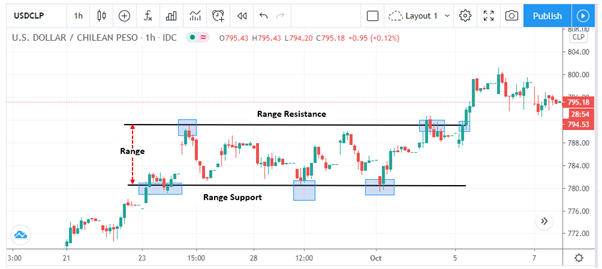

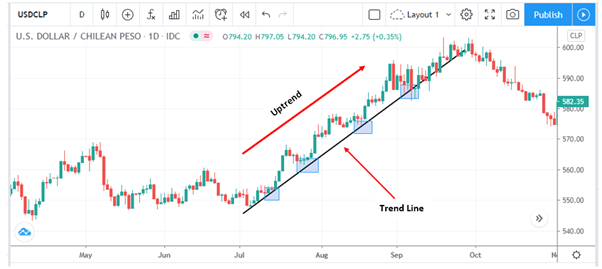
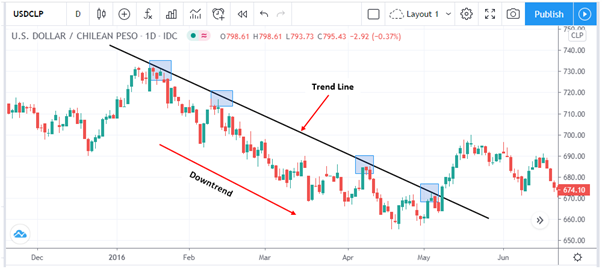
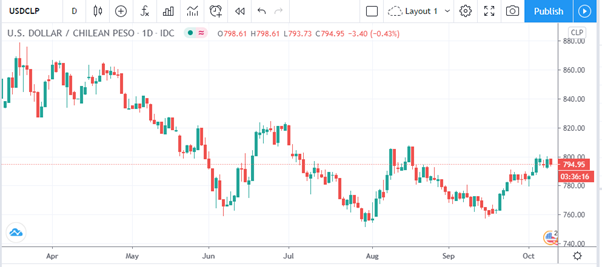
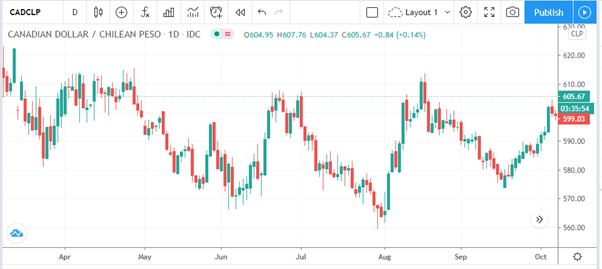
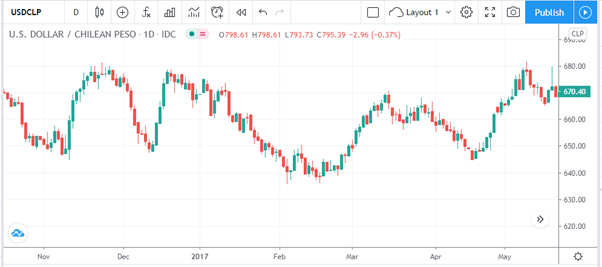
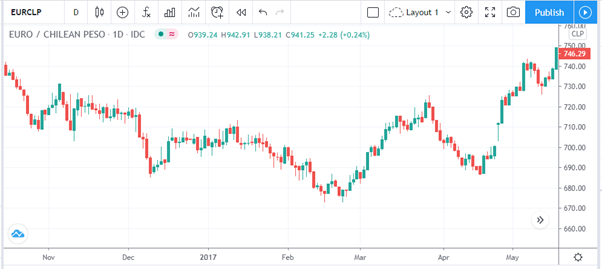
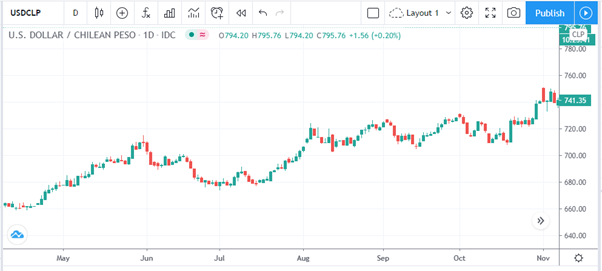
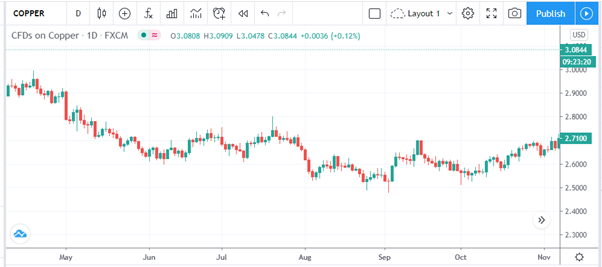






Leave a Reply